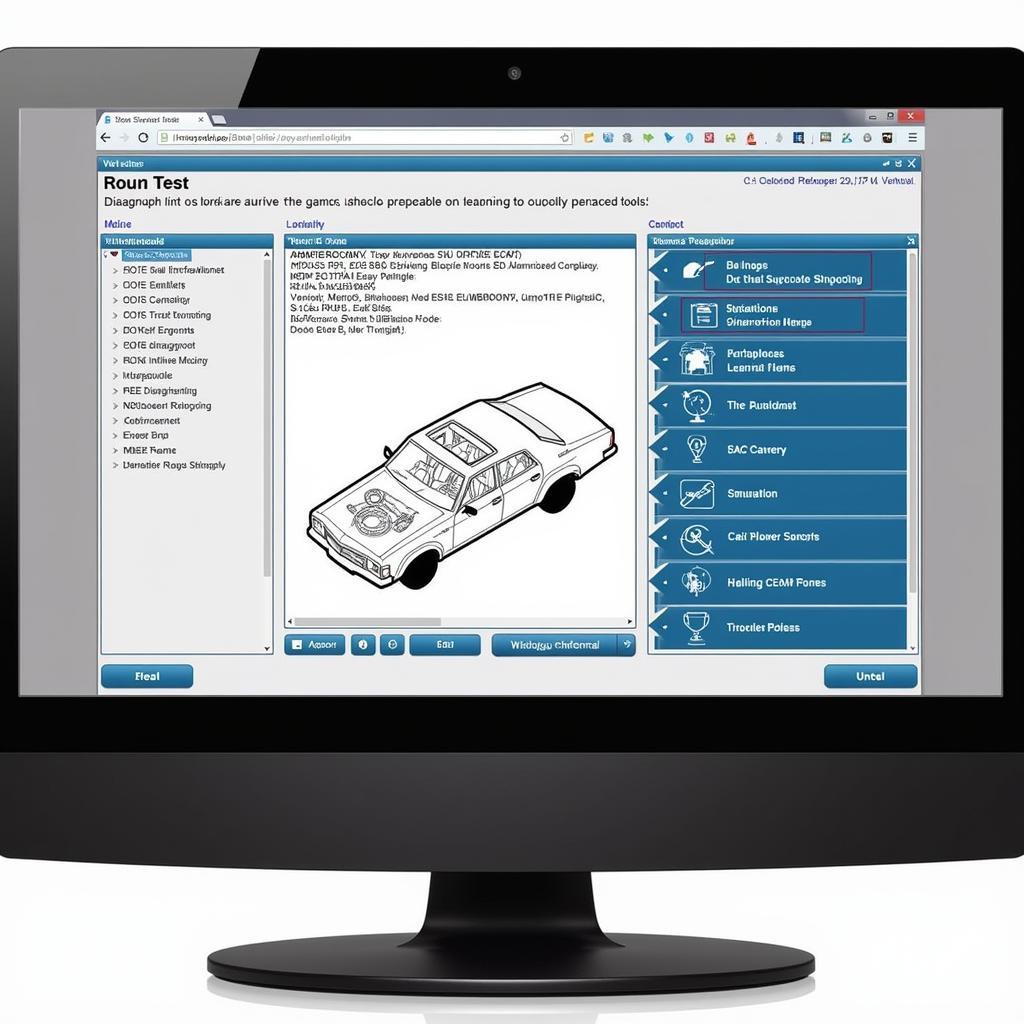The Ase Simulation Test, often referred to as the “Workstation Exam,” presents a unique challenge for aspiring automotive technicians. Unlike traditional multiple-choice exams, the ASE Simulation Test evaluates your ability to apply knowledge and critical thinking skills in a virtual garage environment. This article delves into the intricacies of the ASE Simulation Test, providing valuable insights, tips, and strategies to help you confidently approach and conquer this crucial step towards ASE certification.
Understanding the ASE Simulation Test Format
The ASE Simulation Test employs interactive simulations to assess your ability to diagnose and repair vehicle systems in a realistic setting. You’ll encounter various scenarios mimicking real-world shop situations, requiring you to interpret data, make decisions, and execute procedures within a specific time frame.
 ASE Simulation Test Interface
ASE Simulation Test Interface
Key Features and Elements of ASE Simulations
- Virtual Workstations: The simulations provide a virtual representation of a mechanic’s workstation, complete with tools, equipment, and resources you’d find in a real shop.
- Interactive Components: You’ll interact with various elements within the simulation, such as using a scan tool, connecting a multimeter, or selecting tools from a virtual toolbox.
- Diagnostic Procedures: The scenarios often involve diagnosing problems based on customer complaints, visual inspections, or diagnostic trouble codes (DTCs).
- Repair Tasks: Beyond diagnosis, you may be required to perform virtual repairs, such as replacing components, adjusting settings, or performing specific procedures.
Essential Tips for ASE Simulation Test Success
- Familiarize Yourself with the Interface: Before diving into practice tests, explore the simulation interface thoroughly. Understand how to navigate menus, access tools, and interact with the virtual environment.
- Master the Basics: A strong foundation in automotive fundamentals is crucial. Review basic electrical principles, engine operation, brake systems, and other core areas covered in the specific ASE test series you’re taking.
- Practice Makes Perfect: Utilize ASE practice tests and simulations available online or through reputable study guides. Familiarize yourself with the types of scenarios, questions, and interactions you’ll encounter.
- Time Management: Like the traditional ASE exams, time management is key. Allocate your time wisely, focusing on completing tasks efficiently without sacrificing accuracy.
- Develop a Systematic Approach: Approach each scenario methodically. Gather information, analyze data, and formulate a plan before taking action within the simulation.
Common ASE Simulation Test Scenarios
While specific scenarios vary depending on the ASE test series, here are some common themes:
- Diagnosing Engine Performance Issues: You might encounter simulations involving misfires, rough idling, or loss of power. You may need to interpret scan tool data, check fuel pressure, or inspect ignition components.
- Troubleshooting Electrical Faults: These scenarios could involve diagnosing issues with lighting, starting, charging, or other electrical systems. You might need to use a multimeter to test circuits, check for shorts or opens, or diagnose battery problems.
- Brake System Diagnosis and Repair: Simulations may involve diagnosing problems with braking performance, such as pulling, spongy pedals, or unusual noises. You might be tasked with checking brake fluid levels, inspecting brake pads and rotors, or bleeding the brake system.
Advanced Strategies for ASE Simulation Tests
- Think Like a Technician: When approaching scenarios, put yourself in the shoes of a professional technician. Consider the most logical steps to take, based on the information provided and the symptoms described.
- Pay Attention to Detail: The simulations often include subtle clues or details within the virtual environment. Carefully observe gauges, readings, and visual cues to gather all necessary information.
- Don’t Be Afraid to Refer to Resources: Just like in a real shop, don’t hesitate to utilize resources available within the simulation, such as wiring diagrams, component locations, or manufacturer specifications.
- Learn from Your Mistakes: If you make a mistake during a practice simulation, take the time to understand why it was incorrect. Review the correct procedure or approach to avoid repeating the error.
 Student Practicing for ASE Simulation Test
Student Practicing for ASE Simulation Test
Beyond the ASE Simulation Test: Preparing for a Successful Career
- ASE Certification – Your Gateway to Opportunity: Achieving ASE certification opens doors to advancement and recognition within the automotive industry. It demonstrates your commitment to excellence and expertise to potential employers.
- Continuous Learning – A Lifelong Journey: The automotive field is constantly evolving. Embrace ongoing education, stay updated on new technologies, and refine your skills to thrive in this dynamic industry.
Need Assistance? We’re Here to Help!
Navigating the ASE Simulation Test or have questions about your automotive career path? Contact us at Phone Number: 0369020373, Email: [email protected], or visit us at Thôn Ngọc Liễn, Hiệp Hòa, Bắc Giang, Việt Nam. Our dedicated support team is available 24/7 to provide guidance and answer your queries.
Remember, preparation is key to conquering the ASE Simulation Test. By understanding the format, mastering essential concepts, and employing effective strategies, you can approach the exam with confidence and achieve ASE certification.
